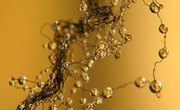Gel electrophoresis is a method used in laboratories to separate DNA (deoxyribonucleic acid). It can also be used to separate RNA and proteins.
Reading gel electrophoresis results allows for researchers to determine the size of the strands in a sample. To understand how the process works, one must first learn the gel electrophoresis definition.
Gel Electrophoresis Definition
Gel electrophoresis is a powerful tool used in molecular biology to determine the size and electrical charge of DNA, RNA and proteins. You start by using pieces of DNA that were digested by enzymes from a larger strand of DNA.
Using gel electrophoresis band intensity as your results, you can figure out what the size of the fragments is. One can then obtain a DNA fingerprint.
As the “electro” portion of the word reveals, a gel electrophoresis definition entails the use of an electrical field. A special machine is used that contains a buffer solution that covers the electrodes, a well for the gel to suspend inside and electrodes themselves.
The Gel in Gel Electrophoresis
Gel electrophoresis requires the use of a gel formed into a slab typically made of a purified version of agar from seaweed called agarose.
Agarose gels make a porous matrix through which charged molecules of various sizes can travel at different speeds. A chemical called ethidium bromide (EtBr) is added to the gel solution prior to pouring it into a mold.
If you have very small DNA or protein molecules to separate, you may need to use a polyacrylamide gel instead of agarose. Take heed when using polyacrylamide, for it is neurotoxic.
A special comb is placed in the agarose gel mold, and then carefully removed after it solidifies. This is where the DNA fragment or other molecular samples are placed, having first been mixed with a special loading dye. The loading dye is just to track the movement of the DNA, since it is not visible otherwise.
There is also a well that contains what is called a DNA ladder or marker. This serves as a high-quality template with known band sizes, for size comparison to the DNA samples being studied. Once the electrical field is applied, these negatively charged molecules will travel through the gel toward the positive end.
Gel Electrophoresis Results
Once the molecules have traveled to the end of the gel, it is time for reading gel electrophoresis results. The EtBr dye in the gel binds to DNA easily, hence its use, and then you can see bands of DNA fluoresce under UV light.
You must take great care not to touch ethidium bromide, for its affinity for DNA also means it can unwind it; it is therefore considered a mutagen. Newer, safer dyes are now available, although their price points are higher.
The UV light reveals the gel electrophoresis band intensity of the DNA or other molecular samples. The location of the bands on a gel reveals the size of the DNA fragment. The gel electrophoresis band intensity reveals the concentration of the molecule.
Now you can compare the bands of DNA in your samples to the DNA ladder sample. The known band sizes of the ladder will help you determine the relative size of the DNA you are studying.
The Importance of Quality Gel Electrophoresis
Gel electrophoresis has been used in DNA fingerprinting and forensics. It has helped researchers determine information about the genomes of many species. Using high-quality gel electrophoresis results are essential for these important fields.
It is therefore crucial to work with high-quality ingredients and take great care in making gels. It is essential to prevent the contamination of DNA samples with RNA or proteins.
Make sure to use clean buffer, pour the gel carefully so its comb wells are evenly formed and keep all reagents at the proper temperature. Gel electrophoresis band intensity should be vibrant and clean, with no traces of other DNA in the background, and no smears of RNA or proteins polluting the gel.
References
Tips
- Sometimes your DNA sample will not line up perfectly with a sample from the marker ladder, so you will have to make educated guesses in these cases. When comparing two different gels, it is important to use the same DNA marker ladder or at least to run them at the same voltage for the same length of time.
Warnings
- Ethidium bromide is exceptionally carcinogenic, so care should be taken during handling and during proper disposal.
About the Author
J. Dianne Dotson is a science writer with a degree in zoology/ecology and evolutionary biology. She spent nine years working in laboratory and clinical research. A lifelong writer, Dianne is also a content manager and science fiction and fantasy novelist. Dianne features science as well as writing topics on her website, jdiannedotson.com.
